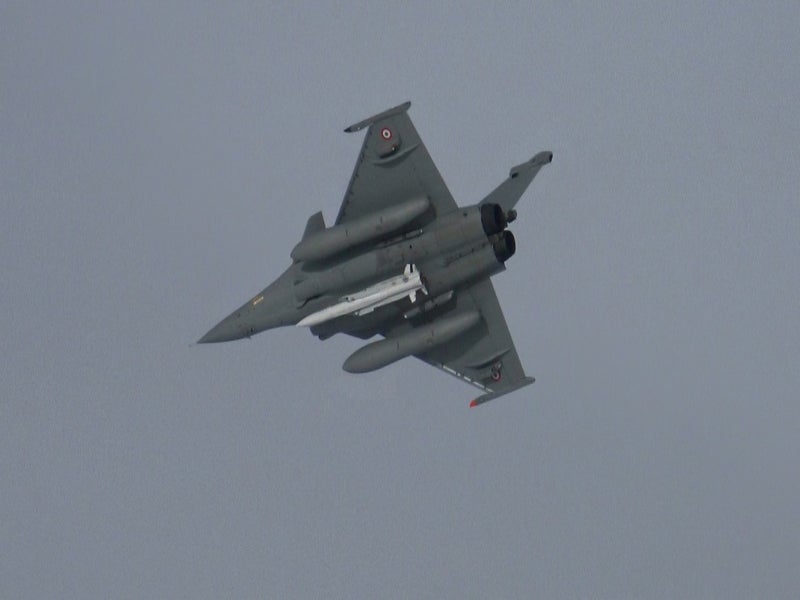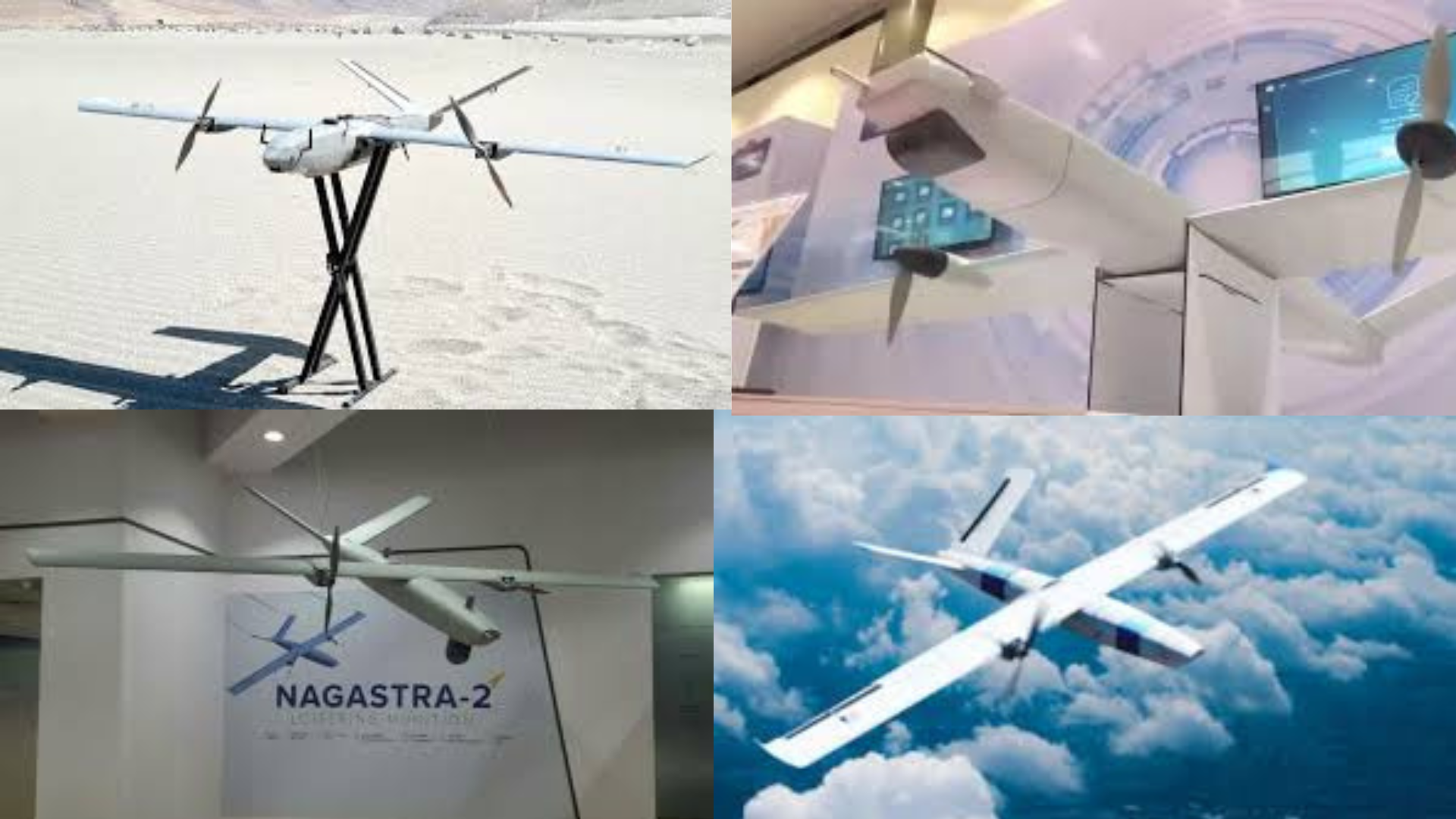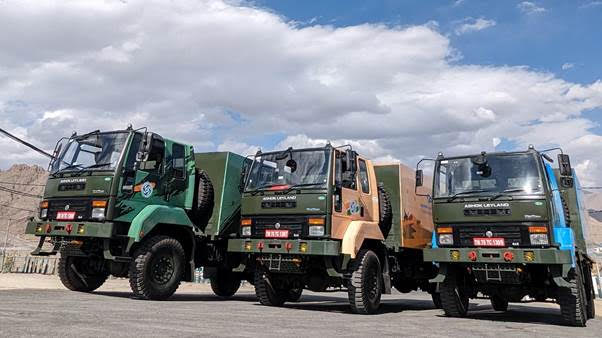SOURCE: AFI


In a landmark development for India-US nuclear collaboration, the United States Department of Energy (DoE) has granted regulatory approval to Holtec International, a New Jersey-based firm, to design and build nuclear reactors in India. Announced on March 26, 2025, this authorization allows Holtec to share unclassified Small Modular Reactor (SMR) technology with three Indian entities: its regional subsidiary Holtec Asia, Tata Consulting Engineers Ltd, and Larsen & Toubro Ltd (L&T). This breakthrough, nearly two decades after the signing of the India-US Civil Nuclear Agreement in 2007, marks a significant step toward unlocking the commercial potential of the long-stalled nuclear partnership, aligning with India’s clean energy ambitions and deepening bilateral ties.
The DoE’s approval falls under the stringent “10CFR810” regulation of the US Atomic Energy Act of 1954, which governs the transfer of nuclear technology. Previously, US companies were permitted to export nuclear equipment to India but were barred from manufacturing or designing reactors locally—a restriction that hindered progress under the 2007 agreement, also known as the 123 Agreement. The March 26 authorization lifts this barrier, enabling Holtec to collaborate with Indian firms on the development of SMRs, a next-generation nuclear technology poised to transform the global energy landscape.
Continue readingSOURCE: RAUNAK KUNDE / NEWS BEAT / IDRW.ORG


Hindustan Aeronautics Limited (HAL) stands at a crossroads of innovation and reflection, leveraging cutting-edge 3D scanning technology to resurrect its vintage HF-24 Marut trainer aircraft as the modern Hindustan Lead-in Fighter Trainer (HLFT-42). This ambitious project not only showcases HAL’s technological evolution but also reflects lessons learned from the troubled development of the HJT-36 Yashas and the successful design inspirations drawn from older trainer aircraft for the HTT-40. By blending legacy with modernity, HAL aims to redefine its approach to trainer aircraft development for the Indian Air Force (IAF).
The HLFT-42 emerged as a conceptual highlight at Aero India 2023, envisioned as a next-generation supersonic Lead-in Fighter Trainer (LIFT). Designed to bridge the gap between basic trainers and advanced combat aircraft, the HLFT-42 aims to prepare IAF pilots for sophisticated fighters like the Tejas Mk2 and the Advanced Medium Combat Aircraft (AMCA). HAL’s strategy cleverly integrates the HF-24 Marut’s mid-fuselage and wing design with the Tejas Mk1’s front fuselage, and it also get rid of the air intake was placed in a ring-like shape around the circumference of the rear fuselage, instead it now has Tejas Mk1 a move that promises to streamline development costs and timelines while capitalizing on proven aerodynamic principles.
Continue readingSOURCE: RAUNAK KUNDE / NEWS BEAT / IDRW.ORG


Jayant Damodar Patil, Larsen & Toubro’s (L&T) head of aerospace and defence, has put forth an ambitious vision for India’s aerospace industry: the development of a fully Indigenous 110kN thrust engine for fighter jets, leveraging lessons from the Kaveri engine program.
Speaking recently, Patil emphasized that L&T, alongside other major private-sector partners, possesses the capability to achieve this feat within India, provided the government prioritizes technical merit over the restrictive “L1 syndrome”—the practice of awarding contracts to the lowest bidder regardless of quality or innovation.
Continue readingSOURCE: RAUNAK KUNDE / NEWS BEAT / IDRW.ORG


In a significant development for India’s Indigenous defence capabilities, officials from Bharat Dynamics Limited (BDL) have confirmed that the Helina/Dhruvastra anti-tank guided missile (ATGM), originally developed for the Light Combat Helicopter (LCH) program, will also be integrated into the Indian Air Force’s (IAF) fleet of 22 Boeing AH-64 Apache attack helicopters. This move underscores the versatility of the missile system and its growing role in enhancing the IAF’s firepower.
The Helina, also known as Dhruvastra in its air-launched variant, is a third-generation, fire-and-forget ATGM designed to neutralize Armoured targets, including tanks and fortified positions. Already successfully tested from the Advanced Light Helicopter (ALH)-Rudra Weapon System Integrated (WSI) platform, the missile is now on track for integration with Hindustan Aeronautics Limited’s (HAL) LCH Prachand attack helicopters within the next couple of months. The IAF’s interest in equipping its Apache fleet with this indigenous missile further amplifies its strategic adoption across multiple platforms.
Continue readingSOURCE: AFI


The Indian Air Force (IAF), tasked with the critical responsibility of delivering nuclear weapons in retaliation as part of India’s nuclear triad, relies heavily on its fleet of fighter jets to execute this mission. Currently, the IAF’s nuclear delivery mechanism involves aircraft such as the Mirage 2000, Jaguar, and potentially the Rafale, equipped with gravity-based nuclear bombs.
This approach, however, necessitates that these aircraft fly over or near their target areas, exposing them to advanced enemy air defenses and increasing the risk of mission failure. As regional security dynamics evolve and adversaries bolster their air defense capabilities, it’s time for the IAF to transition to air-launched nuclear-capable missiles—offering a safer, more flexible, and strategically superior deterrent.
Continue readingSOURCE: AFI


The air-launched BrahMos-NG (Next Generation), a 1.3-ton supersonic cruise missile capable of reaching speeds of Mach 3.5, is generating significant buzz on the international stage. With its first test flight slated for 2026, this Indo-Russian anti-ship and anti-ground weapon system has already piqued the interest of over a dozen countries. The missile’s promise of speed, precision, and adaptability is turning heads, particularly as subsonic cruise missiles—commonly offered for air-launched platforms—have exposed vulnerabilities in contested airspace, a lesson starkly illustrated by the ongoing Ukraine-Russia war.
Developed by BrahMos Aerospace, a joint venture between India’s Defence Research and Development Organisation (DRDO) and Russia’s NPO Mashinostroyeniya, the BrahMos-NG builds on the success of its predecessor, the BrahMos missile, which has already secured a reputation as one of the world’s fastest supersonic cruise missiles. Weighing just 1.3 tons—half the weight of the original BrahMos—and designed for a range of up to 290 km (extendable to 450 km with upgrades), the NG variant is compact enough to be integrated into a variety of platforms, including lighter fighters like India’s Tejas, as well as heavyweights like the Su-30 MKI and Rafale. Its Mach 3.5 speed and reduced radar cross-section make it a formidable option for both anti-ship and land-attack roles.
Continue readingSOURCE: AFI


The Pakistan Air Force (PAF) has recently restructured its fighter fleet into a tiered system: the JF-17 Block 3 as the lower/mid-tier, the J-10C as the mid/upper-tier, and the anticipated acquisition of the Chinese J-35 stealth fighter as the upper-tier. While this modernization appears to bolster the PAF’s capabilities on paper, a closer examination reveals why this development might actually be advantageous for the Indian Air Force (IAF).
This article explores the operational dynamics of each jet, their estimated mission readiness rates, and the strategic implications for India, focusing on how these developments could expose vulnerabilities in Pakistan’s air strategy.
Continue readingSOURCE: AFI


The GTX37-14U, developed by the Gas Turbine Research Establishment (GTRE) under India’s Defence Research and Development Organisation (DRDO), stands as a pioneering achievement in the nation’s quest for self-reliance in aero-engine technology. Conceived in the 1970s, this afterburning turbojet engine marked India’s first fully indigenous jet engine design, laying the groundwork for subsequent advancements in military aviation propulsion. Though it never powered an operational fighter aircraft, the GTX37-14U remains a testament to GTRE’s early ambitions and engineering ingenuity, offering valuable lessons for India’s ongoing engine development programs.
GTRE, established in 1959 as the Gas Turbine Research Centre (GTRC) in Kanpur and later relocated to Bengaluru in 1961, was tasked with advancing India’s gas turbine technology for military applications. The GTX37-14U emerged from this mission, with its development beginning in the mid-1970s as a demonstrator engine for fighter aircraft. First run in 1977, it completed its demonstrator phase by 1981, showcasing GTRE’s ability to design and test a complex propulsion system from scratch—a feat accomplished with limited resources and expertise compared to global aerospace powers.
Continue readingSOURCE: IDRW.ORG


India’s indigenous Light Combat Aircraft (LCA) Tejas Mk-1A is nearing a critical milestone as it undergoes rigorous extra firing and electronic warfare (EW) trials to ensure it meets the Indian Air Force’s (IAF) operational standards. According to sources cited by the Indian Defence Research Wing (idrw.org), the IAF is likely to receive its first fully operational Tejas Mk-1A in the first quarter of the financial year 2025-26, potentially between late April and early May 2025.
The trials follow the Mk-1A’s maiden flight on March 28, 2024 (not February as initially misreported), when the first aircraft, designated LA-5033, took to the skies from HAL’s Bengaluru facility for an 18-minute sortie. That flight, however, utilized older Category B F-404 engines—reserve units from earlier Tejas Mk-1 production—due to delays in the supply of new GE F-404-IN20 engines. These interim engines allowed HAL to maintain testing momentum, but the aircraft’s full potential hinges on the integration of the latest powerplants.
Continue readingSOURCE: IDRW.ORG


The Indian Army is turning to private sector ingenuity to enhance the anti-drone capabilities of its T-90 Bhishma main battle tanks, a critical component of its armored fleet. With over 1,200 T-90s in service and hundreds more in production, the Army aims to integrate an autonomous anti-drone system into the tanks’ existing remotely operated 12.7 mm anti-aircraft gun (AAG), currently operated manually by the tank commander. This ambitious upgrade seeks to counter the rising threat of low-speed aerial targets, such as drones, by leveraging advanced technology to achieve 360-degree autonomous detection, recognition, and identification (DRI) of targets, alongside the development of specialized fragmentation rounds.
The T-90’s current setup includes a 12.7 mm NSV heavy machine gun mounted on the turret, remotely controlled via the commander’s TKN-4S Agat-M sight, part of the 1A45 fire control system (FCS). While this configuration, indigenized and improved by Indian firms over its Russian origins, allows the commander to observe and engage aerial threats, the process remains manual—relying on human detection, aiming, and firing. This limitation has become a liability in modern warfare, where drones and loitering munitions, as demonstrated in conflicts like Ukraine, pose a persistent and agile threat to armored units. The Army now envisions a fully autonomous solution to transform the T-90 into a drone-repelling powerhouse.
Continue readingSOURCE: AFI


In a curious turn of events, photographs of an Indian Air Force (IAF) Su-30MKI pilot wearing a helmet adorned with the Chinese Air Force roundel have gone viral on the X platform, raising eyebrows and igniting widespread speculation. The images, which surfaced recently, depict the pilot in full gear, with the distinctive red star and yellow bars of the People’s Liberation Army Air Force (PLAAF) prominently displayed—a stark contrast to the IAF’s traditional tricolor roundel. While the unusual sight has led to a flurry of questions and theories online, a closer examination suggests this may be a deliberate move tied to simulation exercises rather than a geopolitical statement.
The photographs, first shared by IAF and quickly amplified across X, show the Su-30MKI pilot preparing for a mission. The helmet, typically a canvas for national pride and unit insignia, instead bore the PLAAF roundel, prompting immediate reactions ranging from confusion to conspiracy. Some users questioned whether this signaled a breach in security or an unlikely collaboration, while others speculated about the IAF adopting unconventional tactics. The timing—amidst heightened India-China tensions along the Line of Actual Control (LAC)—only fueled the debate further.
Continue readingSOURCE: AFI


In a landmark advancement for India’s defence and aerospace sector, Solar Defence and Aerospace Limited is preparing to inaugurate a state-of-the-art 1,250-meter-long and 25-meter-wide airstrip dedicated to Unmanned Aerial Vehicles (UAVs), alongside a live munition and warhead testing facility designed for Loitering Munitions and other guided munitions. This significant event, scheduled for March 30, 2025, will be presided over by Prime Minister Narendra Modi during his visit to Nagpur, Maharashtra, highlighting India’s growing prowess in indigenous defence technology.
Located at Solar Defence and Aerospace Limited’s ammunition facility in Nagpur, the newly constructed airstrip and testing range represent a leap forward in India’s capabilities for UAV development and munitions testing. The 1,250-meter runway, tailored specifically for UAVs, will support the takeoff, landing, and operational testing of unmanned systems, including Medium Altitude Long Endurance (MALE) platforms. The accompanying live munition and warhead testing facility will enable rigorous evaluation of advanced weaponry, such as Loitering Munitions—often dubbed “kamikaze drones”—and other precision-guided munitions, ensuring their reliability and effectiveness in combat scenarios.
Continue readingSOURCE: AFI


The Indian Army’s canine warriors, long celebrated for their bravery in counter-terrorist operations and disaster relief missions, are set to receive a significant upgrade in protection and care. Recognizing the invaluable role these dogs play as force multipliers, the Army, through its Remount Veterinary Corps (RVC), is developing advanced protective devices—including lightweight bulletproof vests and smart collars—to mitigate casualties and enhance their operational effectiveness. These innovations aim to address the harsh realities of military service, where dogs face extreme weather, physical exertion, and life-threatening combat environments.
Military dogs have been integral to the Indian Armed Forces, Central Armed Police Forces (CAPFs), and law enforcement agencies for decades. Breeds like German Shepherds, Belgian Malinois, and Labradors excel in roles such as patrolling, explosive detection, search and rescue, and neutralizing threats. Their contributions have been pivotal in operations along the Line of Control (LoC), in counter-insurgency missions in Jammu and Kashmir, and during disaster relief efforts like the 2023 Uttarakhand floods. Some have even served overseas with Indian peacekeeping contingents, earning gallantry awards for their courage.
Continue readingSOURCE: AFI


Significant step forward in Morocco-India relations was marked by a high-profile meeting in New Delhi between His Majesty the King and the Kingdom of Morocco’s Ambassador to India, Mohammed Al Malki, and Mr. Sanjeev Kumar, India’s Secretary (Defence Production). The discussions, held at the Ministry of Defence, centered on deepening cooperation in military industries, reflecting the growing strategic partnership between the two nations. This meeting underscores Morocco’s increasing interest in India’s burgeoning defence sector and India’s commitment to expanding its global defence collaborations.
Ambassador Mohammed Al Malki, representing His Majesty King Mohammed VI, engaged with Mr. Sanjeev Kumar, a key figure in India’s defence production ecosystem, to explore avenues for enhanced military-industrial collaboration. The timing of the meeting—occurring just two days before March 30, 2025—highlights the urgency and priority both nations place on strengthening bilateral ties in this critical domain.
Continue readingSOURCE: AFI


In a significant development for India’s defense sector, commercial vehicle manufacturer Ashok Leyland announced on Friday that its defence business has clinched orders worth over Rs 700 crore from the Indian Army. This milestone not only underscores the company’s enduring partnership with the armed forces but also solidifies its position as a leader in advanced mobility solutions tailored for military applications. The announcement, made on March 28, 2025, highlights Ashok Leyland’s pivotal role in supporting the Indian Army’s operational needs across diverse and challenging terrains.
The contracts encompass a wide array of specialized vehicles designed to meet the Indian Army’s requirements for troop transportation, logistics, and specialized mobility under the Close-in Weapon Systems (CIWS) programme. The vehicles include the rugged Stallion 4×4 and 6×6 trucks, a short chassis bus, and a mobility system travelling platform. Ashok Leyland emphasized that these platforms combine “superior reliability with exceptional off-road capability,” ensuring seamless maneuverability across India’s most demanding landscapes—from the icy heights of the Himalayas to the scorching deserts of Rajasthan.
Continue reading